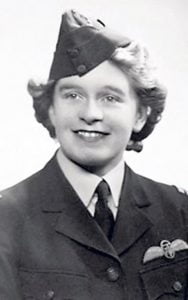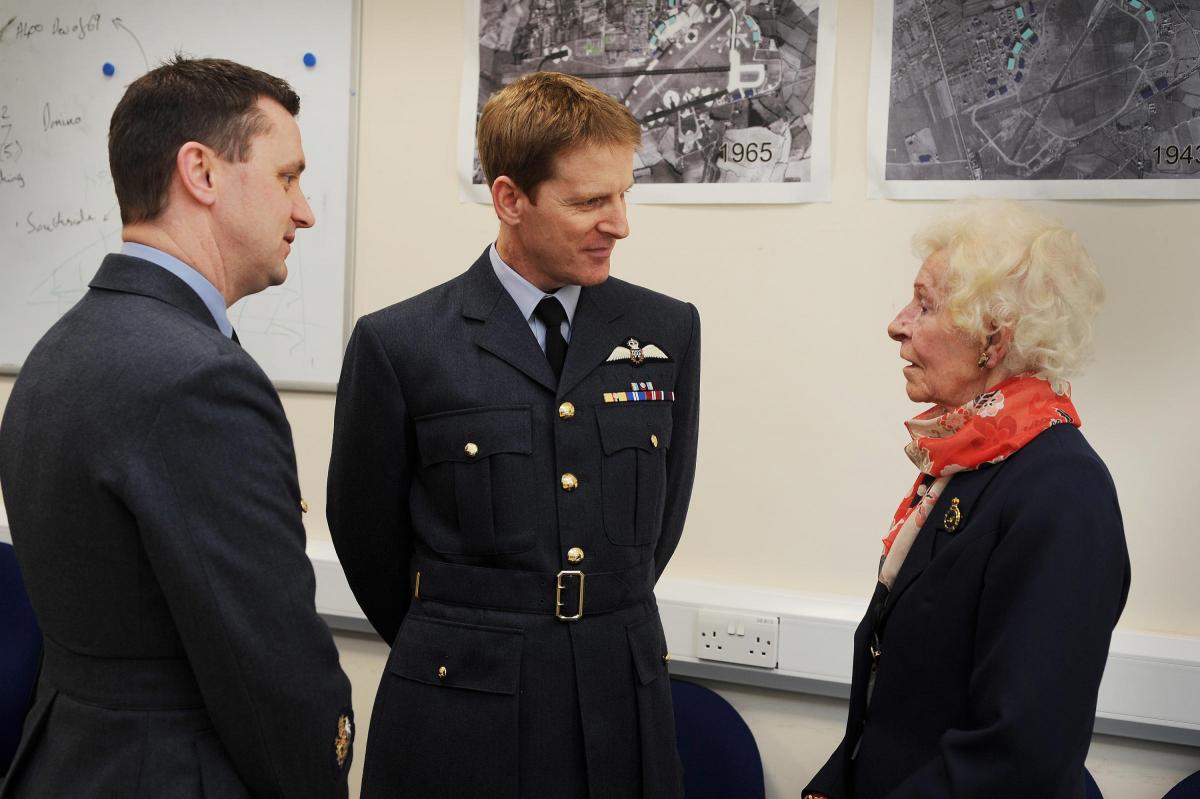by Robbin Laird
Recently, the RAF celebrated its 100th year.
And with the passing of Mary Ellis air pioneer there is another aspect to remembering the RAF.
Mary Ellis, one of the first women to fly Spitfire, heavy bombers and jet aircraft for the RAF has just died at 101.
The obituary published by the BBC on July 26, 2018 highlighted her career and this interesting moment for her during the war.
She was a member of the Air Transport Auxiliary (ATA), which employed civilians to deliver planes from factories to airfields during the Second World War.
However, her contribution to the war effort was not always appreciated.
At one RAF base, the ground crew refused to believe she was the pilot of the Wellington bomber she had just landed.
“They actually went inside the aeroplane and searched it,” she recalled.
“Everybody was flabbergasted that a little girl like me could fly these big aeroplanes all by oneself.”
When she reached the age of 98, the Daily Telegraph talked with her about her past and current flying experience.
Mary Ellis is 98 and bright as a button. When she was at school she was hopeless at hockey and so she opted for another sporting endeavour: she learnt to fly. It was at an air show in Hendon that she was bitten by the bug, after persuading her father to let her take a pleasure flight in an Avro 504.
“From that moment I was hooked,” said Mary. She had been awarded her flying licence by the time she was 16.
That in itself is remarkable, but it was only the beginning of Mary’s story, for in 1941 she heard an appeal on the radio by the civilian Air Transport Auxiliary (ATA) for women pilots. She applied, took a flying test and was accepted into their ranks.

At Hatfield, Mary Wilkins, as she then was, learnt to fly Spitfires, Hurricanes and Harvards with the object of delivering the newly manufactured planes to the bases from which they would be used. After basic training Mary was based at Hamble on the south coast, and during the war she single-handedly delivered 76 types of aircraft, including about 400 Spitfires.
I say single-handedly as Mary was alone in the aircraft, which was equipped only with a compass and a stopwatch. She found her way to her target using a map.
The ATA delivered 308,567 aircraft during the war; Mary’s own total was in the region of 1,000 planes. I asked her if she had been shot at. “Just the once,” she said. During the war, 143 ATA pilots were lost – one in 10 did not survive – including 14 women. “Attagirls”, they were called, and not without cause.
Seated in her first Spitfire prior to delivery, Mary was asked by the mechanic who had helped her into the cockpit, “How many times have you flown one of these?” As she relates the story her face breaks into a smile. “I said never, and he fell off the wing….”
Mary still gets airborne, though she no longer flies solo. The light in her eyes when she talks of her experiences is completely infectious, but she is as interested in other people and their stories as in relating her own. “I’m nothing special,” said Mary at our lunch. “I’m just ordinary.”
Perhaps she will forgive us if we beg to differ.
The featured photo shows Mary Ellis at a March 2017 ceremony at RAF Brize-Norton.


